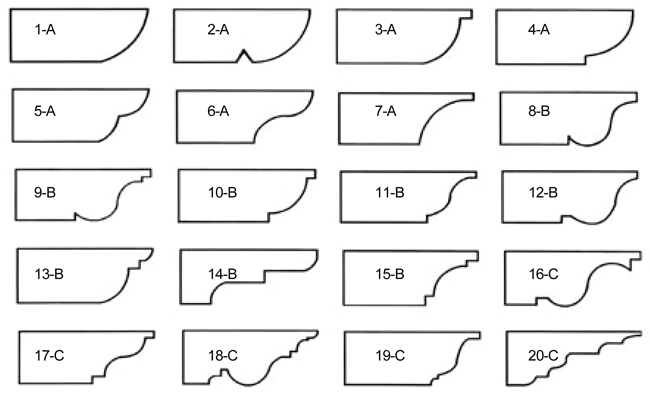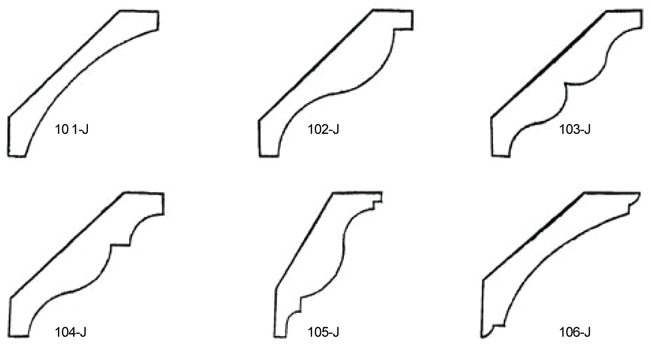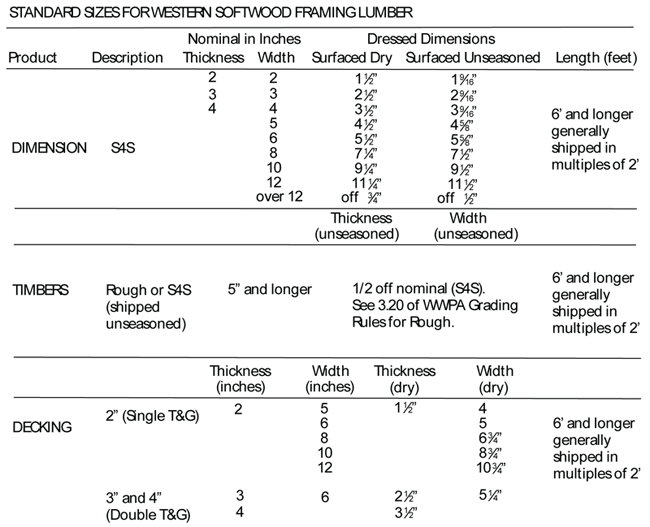 |
|
|
| 3x4, 3x6, 3x8, 3x10, 3x12 |
GRN |
8’ to 32’ |
| 4x4, 4x6, 4x8, 4x10, 4x12, 4x14, 4x16, 4x18 |
GRN |
8’ to 32’ |
| 6x6, 6x8, 6x10, 6x12, 6x14, 6x16, 6x18 |
GRN |
8’ to 32’ |
| 8x8, 8x10, 8x12, 8x14, 8x16, 8x18 |
GRN |
8’ to 32’ |
| 10x10, 10x12, 10x14 |
GRN |
8’ to 32’ |
| 12x12, 12x14 |
GRN |
8’ to 32’ |
| |
|
|
|
|
| 4x4, 4x6, 4x8, 4x10, 4x12, 4x14, 4x16 |
GRN |
8’ to 24’ |
| 6x6, 6x8, 6x10, 6x12, 6x14 |
GRN |
8’ to 24’ |
| |
|
|
|
|
| 2x14 |
KD |
8’ to 24’ |
| 4x14 |
KD |
8’ to 24’ |
| 6x6, 6x8, 6x10, 6x12, 6x14 |
KD |
8’ to 24’ |
| 8x8 |
KD |
8’ to 24’ |
| |
|
|
|
|
| 3x4, 3x6, 3x8, 3x10, 3x12 |
KD |
8’ to 24’ |
| 4x4, 4x6, 4x8, 4x10, 4x12, 4x14 |
KD |
8’ to 24’ |
| 6x6, 6x8, 6x10, 6x12, 6x14 |
KD |
8’ to 24’ |
| |
|
|
|
 |
|
|
| 3x6 |
KD |
8’ to 24’ |
| 4x4, 4x6, 4x8, 4x10, 4x12 |
KD |
8’ to 24’ |
|
|
| ● Surfacing |
| ● Resawing |
| ● Corbels |
| ● Knee Braces |
| ● Baluster |
| ● Siding / Custom Patterns |
| |
|
|
|
|
| |
|
|
Please call for quote on custom cut timbers up to 48'
|
|
Click here to see our Material Safety Data Sheets
Corbel & Knee Brace Patterns JWL 2008
Allowable Properties for Dimension Lumber WCLIB 2005 |
 |
| |
|
The North American softwood lumber industry has three moisture content standards for framing lumber. These standards are reflected in the grade stamp by the following abbreviations:
- GRN for unseasoned (or green) lumber with a moisture content in excess of 19%,
- DRY or KD for lumber air seasoned or kiln dried (KD) to a maximum moisture content of 19% at the time of surfacing, and
- MC15 or KD15 for lumber air seasoned or kiln dried to a maximum moisture content of 15% at the time of surfacing.
While framing lumber is regionally available both GRN and DRY or KD, this publication is limited to a discussion of unseasoned (GRN) structural lumber products.*
The amount of water in wood is expressed as a percentage of the weight of oven dry wood. For example, a 40% moisture content means the water contained in the piece weighs 40% the weight of the wood fiber. In living trees, it is not uncommon for the moisture content to be from 40 to over 200%.
In lumber, dimensional change starts to occur when the average moisture content reaches the fiber saturation point, about 28 to 30%. As a point of reference, millwork in the interior of a home will reach an annual average equilibrium moisture content (EMC) of somewhere between 6 and 13%.
Relationship of Moisture Content to Standard Sizes
Moisture content standards are applied to the lumber at the time it is surfaced or cut to its final size at the mill. All lumber will change in size somewhat as its moisture level reaches equilibrium with the surrounding conditions; however, unseasoned lumber (above 19% MC) will change (shrink) more than dry lumber. To accommodate this natural occurrence, unseasoned lumber is sized slightly larger than is dry lumber at the time of surfacing. In end use, as the unseasoned lumber dries naturally and adapts to its environment, it becomes approximately the same size as lumber that was surfaced at a lower moisture
content and manufactured to the size standards for dry lumber.
The standard surfacing sizes for unseasoned and dry products even out as framing lumber reaches its equilibrium moisture content (EMC) level.
For example:
- a 2x10 manufactured unseasoned is surfaced to a 91/2" width; assume its moisture content level is at fiber saturation point (28%).
- a 2x10 manufactured dry is surfaced to a 91/4" width; assume its moisture content level is at 18%.
- Assume the eventual EMC for both pieces will be approximately 8%.
The unseasoned piece will shrink a total of 1/2" from the fiber saturation point (28%) to 8%; whereas, the dry piece will shrink only 1/4" from the 18% MC to 8%. At EMC, both 2x10s theoretically reach the width of 9". However, since dimensional change charts are based on averages and lumber is an organic product, there are variables involved within individual pieces. It is not a good idea to mix unseasoned and dry framing members in the same system. It is best to stick with either one or the other for best results.
Whether framing lumber is produced unseasoned or dry is a function of economics, species, climate, size and customer preference.
Because drying (seasoning) lumber at the mill increases its manufacturing cost, much of the structural material produced by West Coast mills and shipped short distances for use on the West Coast is manufactured unseasoned. This is particularly true for Douglas Fir framing lumber.
Douglas Fir is a dimensionally stable species which has the ability to season well in position. Many framers prefer Douglas Fir unseasoned for ease of nailing and its final drying can occur after the lumber is separated from its units and put into place. Contractors, and ultimately consumers, don’t have to pay for the cost of drying these products at the mill.
In contrast, most of the Western Lumber shipped longer distances is dried before shipment. This is a practical consideration. Shipping costs are based on weight and, depending on the relationship of distance to weight, it can be more economical to dry lumber at the mill rather than ship excess moisture (water). Much of the Western Lumber destined for Midwestern, Northeastern, and Southern framing markets is produced dry.
Historically, species grown and manufactured in a particular region were likely to be used in areas nearby with relatively similar climatic and humidity conditions. Lumber manufactured in the mild climate of the Pacific Northwest was often shipped unseasoned. Lumber from the drier, inland region was manufactured dry and these products were shipped into and installed in similarly dry, low-humidity locations.
Today, practices are less regionally localized. Now it is the particular species of wood, its natural physiological properties, marketplace preferences and the location where it will be used that determine whether framing lumber is produced and shipped unseasoned or dry.
While a large percentage of the Western cedars and Douglas Fir is shipped unseasoned, most of the Western pines, spruces, hemlocks, and true firs are produced dry. However, 2x dimension lumber in any species, destined for low-humidity climates is usually manufactured and shipped dry.
Designers and contractors for projects in hot or dry, low-humidity climates may want to specify dry framing products, or if purchasing unseasoned lumber, allow it to acclimate for a time prior to use. stickered, allowing the surrounding air to flow around the lumber and through the stack. Both unseasoned and dry framing products have advantages and disadvantages. Many builders in the West and Northeast prefer unseasoned framing lumber over dry because it is more economical, easier to nail and less prone to splitting when nailed.
2x is the thickest framing lumber widely available dry. 3x and 4x framing lumber is usually manufactured unseasoned; however, dry lumber in these sizes is available in some nonstructural appearance grades. Timbers, which are members 5x and thicker, are sold unseasoned.
|
|
|
Solid-stacked, unseasoned lumber may be stored outdoors without protection in cool weather for short periods of time, although some of the top boards in a stack may experience some dimensional stability-related problems if exposed to sun. A light cover (over the top only) will help prevent potential problems. Rain is not particularly detrimental to unseasoned lumber, as short term wetting and drying has little effect on the moisture content of the wood; however, no lumber should be allowed to sit in puddles of water or mud. Grading rules used across North America regulate the amount of deviation from true or straight that is allowed in lumber at the time of manufacture. Any deviations from straight or flat across the length and width is checked by the lumber grader at the time of surfacing. Caution should be exercised during lumber transit, storage and handling to ensure additional deviations do not occur as a result of inappropriate practices.
For extended storage, lumber should be separated with lath (stickers) or other thin strips of wood to allow air to circulate through the pile. See Figure 2. Proper storage will keep the lumber straighter as it seasons and the air circulation will eliminate the opportunity for mold or mildew to develop. (Refer to WWPA’s Lumber Storage TIP Sheet for additional information.)
It is not uncommon for unseasoned framing lumber to develop surface mold and mildew during transit or storage prior to use. This is especially true during the warm summer months. Surface molds and mildews produce a fuzzy surface growth which may range in color from yellow to black. These organisms feed off of the sugars and starches readily available in the wood. As the moisture content of the wood drops to below 20%, the growth of these organisms stops. Normally, they do not break down the wood cell wall material and, therefore, cause only cosmetic damage.
Stain-causing fungi occur primarily in the sapwood (fiber from the outer region of the tree). Like mold, stain fungi can affect the appearance of lumber but do not cause structural damage to the wood.
Blue Stain is an example of a cosmetic stain that can readily occur in Ponderosa Pine. Although Blue Stain can be aesthetically pleasing in certain types of applications, lumber manufacturers dry most
prevent its development in their products. While mold, mildew and stain do not affect the strength of the wood, their presence does indicate a higher than 20% moisture content level (as in unseasoned wood). This condition can lead to decay if the affected framing lumber is not allowed to dry out. The easiest way to eliminate this possibility is to sticker and stack the lumber or frame the building. Air circulation
around the affected pieces lowers the surface moisture content level and stops the growth of fungal spores. Lumber seasoned to below the 20% moisture content range rarely, if ever, supports fungal growth. (Source: USDA Agriculture Handbook 72.)
Surface discoloration from mold and mildew on framing lumber can be left on the wood when it is to be covered by a finished wall surface. Proper construction practices will prevent moisture from entering the wall cavity and elevating the moisture content level of the wood.
For exposed conditions, any discolored wood can be cleaned by using a mixture of one part household bleach to three parts water, sprayed on the wood or applied with a non-metal brush. The wood should be flushed clean afterwards. Commercial mildew removers are also available.
As with any cleaning product, wear protective gloves and clothing, avoid skin contact, protect vegetation, and follow manufacturer’s safety instructions.
People with severe respiratory conditions or specific allergies may be sensitive to the presence of mold and associated spores. While this is exceptionally uncommon, if allergies are known to be problematic, dry framing lumber may be preferred.
Although the word “timber” is sometimes used inappropriately to describe various large-size wood members, its meaning in lumber terminology is specifically limited to the size classification of members 5x5 and larger (which includes Beams & Stringers and Posts & Timbers). Timbers are always manufactured and sold
unseasoned.
Depending on species, size, surrounding temperature, air circulation and humidity levels, the amount of time required for acclimatization of timbers is variable.
Lumber dries more quickly on its surfaces and at the ends than in its interior. As mentioned earlier, softwood lumber begins to shrink as it dries below the fiber saturation point, a 28 to 30% moisture
content level. As this happens, the outside fiber becomes smaller than the interior fiber and “seasoning
checks” (fissures or cracks on the surface of the wood) or end splits may occur. Checking and end
splitting are accounted for in the development of design values so no reductions in strength properties
are necessary; however, these natural developments do have cosmetic impact and dimensional change in timbers must be addressed in the design of fastenings and application of finishes. (Refer to WWPA’s Western Woods Use Book for information on designing with heavy timbers.)
Several things can be done to reduce the amount of checking and end splitting to be expected in heavy timbers. Timbers may be specified “Free of Heart Center” (FOHC). Such timbers typically demand price premiums and are limited in availability. Check with local suppliers. In addition, the ends of timbers can be protected with end waxes or other coatings containing paraffin. End coating is available from selected WWPA Member mills upon request (through buyer/seller agreements on large orders), or may be undertaken at the job site if seasoning checks have not yet begun to develop. End coatings help timbers to season more
evenly and are beneficial in extending the shelf life of timbers during storage and transport prior
to installation.
Some degree of checking is virtually unavoidable in large timbers. Prior to specifying for a project, designers and property owners are advised to visit several old buildings that contain large timbers in order to evaluate the degree of checking to be anticipated over time. The rustic quality timbers naturally gain with time may or may not meet design criteria and owner expectations. If a large cross section is
required, but seasoning checks are to be minimized, designers may want to fasten together a number of 2x dry pieces to make up a larger cross section or Investigate the availability of glu-lam timbers.
However, when the heavy scale and rustic aesthetic of Western timbers are central to a design, the special considerations these heavy members require are worth the effort. |
|



